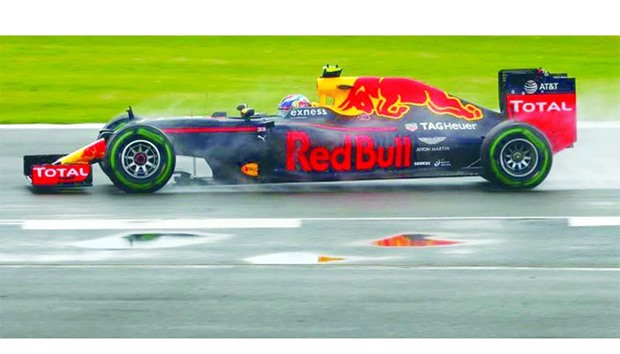Red Bull would oppose the introduction of a proposed ‘halo’ cockpit protection device in Formula One next season if it comes to a vote, team principal Christian Horner has said.
Former champions Red Bull had the device installed on their car at the start of the sport’s second in-season test at Silverstone yesterday, becoming the second team to try it out after Ferrari.
The ‘halo’ concept, more like a wishbone with a central pillar supporting a protective loop above the driver’s head, has been promoted by Ferrari and Mercedes, whereas Red Bull prefer their own ‘aeroscreen’.
The latter device, more attractive to some, did not perform as well in testing by the governing body and the halo is now the main focus.
“Personally I’m not a big fan of the halo,” Horner told reporters after last weekend’s British Grand Prix at Silverstone. “I think it’s an inelegant solution to the problem that it’s trying to deal with.
“I’d prefer there to be more research time taken to do the job properly, rather than rushing something through that may have other consequences. So I’m not a big fan of the halo and the limitations that it has.
“I certainly wouldn’t vote in favour at the moment.”
The International Automobile Federation (FIA) is keen to introduce the halo next year but that would normally require a unanimous vote by top teams in the core Strategy Group, including Red Bull, as a change to the technical regulations.
The FIA could impose it on safety grounds, however, while approval for 2018 would acquire only a majority vote.
Ferrari tested a second version of the halo last Friday at the start of British Grand Prix practice but four times world champion Sebastian Vettel, who did a lap with it, said visibility in some areas remained a concern.
The device was modified from an earlier version, removing some weight and reducing the risk of the driver’s head striking it in the event of an impact.
Improving head protection has become a priority after the deaths last year of Briton Justin Wilson, who was hit by debris in an IndyCar crash, and Frenchman Jules Bianchi who suffered ultimately fatal injuries at the 2014 Japanese Grand Prix.
The halo aims to protect the driver’s head and deflect large debris and objects, such as bouncing wheels that have broken free from tethers.

Red Bull’s Max Verstappen during the Britain Grand Prix 2016 at Silverstone. (Reuters)


